#achavanich
Explore tagged Tumblr posts
Text
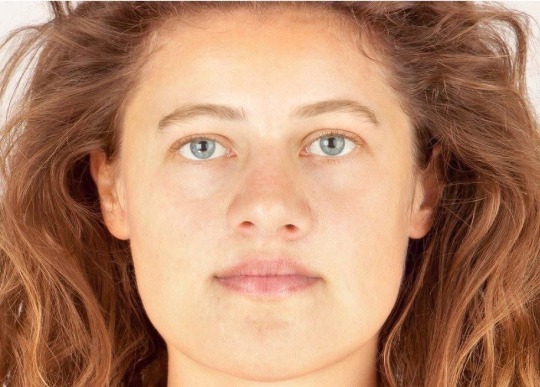
Facial reconstruction of Eva, also referred to as Ava, she was a Bronze Age woman whose remains were discovered in a rock-cut tomb at Achavanich, in the Scottish Highlands. Her burial site and subsequent studies have provided invaluable insights into life in Britain over 4,000 years ago. She is believed to have lived around 4,250 years ago during the early part of the Bronze Age, a period marked by significant advancements in technology, particularly metalworking.
Discovery of Eva
Eva's burial site was found in 1987 at Achavanich, a horseshoe-shaped arrangement of standing stones in Caithness, Scotland. Her remains were discovered in a rock-cut pit that had been carefully prepared, a sign of her community's respect for her. The tomb contained skeletal remains along with grave goods, such as distinctive Beaker pottery, which is associated with the Bell Beaker culture.
Eva was part of the Bell Beaker culture, a widespread archaeological culture known for its characteristic pottery and metalwork, particularly copper and bronze tools. This culture spread across much of Europe, bringing technological and cultural innovations. Bell Beaker communities were also known for their distinctive burial practices, which often involved individual graves with grave goods that reflected the deceased's status and role in the community.
In 2016, Eva's remains underwent extensive analysis, which provided a deeper understanding of her life and times. Isotopic analysis of her teeth suggested that she consumed a diet typical of the region, which included local plants, animals, and possibly some marine resources. DNA analysis indicated her ancestry was primarily from the Neolithic farming populations of Europe, with some genetic contributions from incoming Bell Beaker migrants.
One of the most compelling outcomes of the research was the facial reconstruction of Eva. Using her skull as a foundation, experts created a digital reconstruction that offers a glimpse into her appearance. She likely had light skin and dark hair, features consistent with other individuals from the Bell Beaker period in Britain.
Eva's skeletal remains revealed she was a young adult at the time of her death, possibly in her late teens or early twenties. There were no clear signs of disease or trauma, so the cause of her death remains unknown. Her burial in a carefully prepared grave, along with grave goods, indicates she may have held a significant role or status within her community.
The area of Achavanich is itself an intriguing archaeological site. The arrangement of stones and the presence of Eva's grave suggest that the location held ceremonial or social importance. The Bell Beaker people are known to have constructed and used such sites for rituals, gatherings, and burials.
Eva’s story is a testament to the rich history of the Scottish Highlands and the interconnectedness of prehistoric European cultures. Her discovery continues to provide insights into the lives of Bronze Age communities and their practices, shaping our understanding of this fascinating period in human history.
Source: Facebook
Celt
3 notes
·
View notes
Text
yet again twirling my hair over ava of achavanich
#mhac.txt#anthro.posting#i'd love to do zooarch stuff in eastern europe#but i would ALSO drop everything to do whatever kind of arch work in northern britain and/or scotland#with brigante stuff or even more like ava#ough ough ough
1 note
·
View note
Text





Achavanich Cairn, Achavanich, The Highlands, Scotland, 18.8.18.
Whilst the site is more famous for its stone settings, the collapsed cairn is equally impressive. It seems to incorporate several small cist like chambers and when completed, it may have been as large as the monuments at the nearby Grey Cairns of Camster.
#ice age#stone age#bronze age#copper age#iron age#Neolithic#mesolithic#calcholithic#Paleolithic#prehistoric#prehistory#prehistoric tools#prehistoric pottery#prehistoric living#prehistoric architecture#Cairn#burial mound#burial chamber#burial urns#Achavanich#ancient Scotland#creative#education#cross arts#cross curricular#community#identity#belonging#ritual#mehnir
31 notes
·
View notes
Photo

This is the reconstructed face of a Bronze Age woman (called Ava) who lived in Scotland 3,700 years ago. The woman's bones, including a skull and teeth, were discovered at Achavanich in Caithness in 1987. Known as "Ava", an abbreviation of Achavanich, she is the subject of a long-term research project managed by archaeologist Maya Hoole. (Source)
4K notes
·
View notes
Photo

The standing stones of Achavanich. 22 stones in a horseshoe form. Impressive despite their small size. I wonder if they were ever larger? #roadtrip #history #scotland @visitscotland (hier: Achavanich) https://www.instagram.com/p/B4IgQDbgpFL/?igshid=193nelnqpmwco
0 notes
Photo


I listened to the British History Pod special about the Achavanich Beaker Project and got so! excited! Dr. Alison Sheridan described a skeleton found in northern scotland, now named Ava. Her skeleton was found bound together in a fetal position and buried with evidence of mallowsweet. (While trying to figure out how this was done, Dr Sheridan tried to convince her roommate to let her tie them up and draw it. I love nerds.) There are very few ancient skeletons from Scotland in this good of condition, so the find was a really important one that tells a lot about bronze age life.
She also made a comment about a Scottish skeleton that had been found wearing a leather dress with woven nettle fabric panels. I was so excited that we know what people were wearing 3000 years ago, and that clothing could survive that long, that I had to draw something inspired by it.
So... I guess I’m drawing archaeology fanart now
4 notes
·
View notes
Text
More Background Information
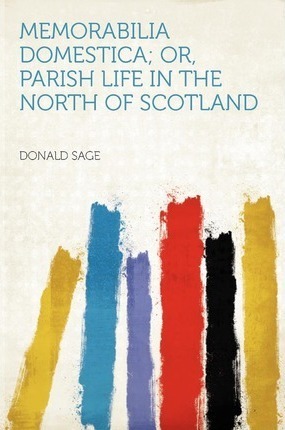
From the Classical Sources
Donald Sage ‘Memorabilia Domestica or Parish Life in the North of Scotland’
‘Here the river receives an addition to its waters from the burn of Suisgill, which rises six miles to the NE, in a deep morass, on the SW shoulder of a hill situated on the borders of Sutherland and Caithness, called “Cnoc-an-Eireannaich” (or “the Irishman’s Hill”), from a tradition that an Irishman had there perished in the snow’.[1]
‘Surrounding the wood … is a fairy-like plat called Achahemisgach, at the upper end of which is a rock with the form of a cross engraved upon it. This evidently must have been some place of sanctity in popish times, especially as the name of the adjoining wood is Coille Chil Mer or ‘the wood of the cell of Mary’. Learabail, on the opposite bank, was a township of considerable extent.’[2]
Calder, James T. History of Caithness from the 10th century 2nd edition. Wick: William Rae. Thurso: John Malcolm and Miss Russell; 1887. Re-published 1973 by Stansfield Fortrose. Reproduced photolithographically by Aberdeen University Press.
This is mainly a secular history. The following notes are relevant to our topic.
p. 73 ‘Much about this time [1160], Earl Ronald was basely murdered at North Calder, in the parish of Halkirk, by a villain of the name of Thiorbiorn Klairke, whom he had banished for his misdeeds from Orkney. He and Harold, his colleague in the earldom, had come over, as was their usual practice, on a hunting excursion to Caithness. It was this Ronald who, in conjunction with his father Koll, founded the cathedral of Kirkwall. He was a nobleman of many excellent qualities; and on account of his eminent piety, and the share which he had in erecting that splendid edifice, was canonized by the Pope. Klairke, the assassin of Ronald, did not escape with impunity. After committing the murder, he fled to a place in the neighbourhood called Assary, where he was overtaken and put to death by some of the Earl’s retainers. The body of the Earl was conveyed from Thurso to Orkney, and buried in the church of the holy virgin in South Ronaldsay. His remains were afterwards transferred to the cathedral of Kirkwall, and were among the first that found a resting place in that celebrated northern minster.’ (A slightly different version of this tale is to be found in Crawford p. 220, where it is described as a battle between two groups, not an assassination attempt by one man. A saga was written of the event which describes Rognvald’s blood staining a boulder and the stain remaining fresh.)
p. 75 Chapter IV includes the story of Bishop John, who lived near Scrabster by Thurso, and had his tongue cut out and both eyes put out. Calder does not mention the bishop’s miraculous cure when he was taken to the resting place of St Triduana at Ballachly, Achavanich. He does give the story of Bishop Adam, Bishop John’s successor, who lived at his palace at Halkirk in 1222 and was burned alive by the people when he tried to increase the butter tax. (A more detailed description of the events surrounding this event can be found in Crawford p. 268.
p. 102-103 describes the link between the Sinclairs of Caithness and Roslyn Chapel.
p. 216 mentions the introduction of the penny tax raised from every household, first by Earl Harold in the 12th century and continued by the various bishops, which was sent to the pope. Could this be the source of the name ‘Pennyland’ for that part of Thurso so called? At the time, the bishops owned land at Scrabster, Lythmore, Stemster and Dorrery; also Durness.
p. 219 Calder gives an account of the drowning of Rev Merchiston after he destroyed the statue of St Fergus in Wick. In a footnote, he gives the following information on St Fergus ‘St Fergus … came to Caithness about the middle, it is supposed, of the eighth century, and did much to convert the natives… to Christianity. His residence would appear to have been in Wick, or its neighbourhood. After labouring for some time in that district he went to Buchan, in Aberdeenshire, and thence to Glammis, in Angus, where he died. His remains were deposited in the Abbey of Scone. “The great house of Cheyne,” says Cosmo Innes, “so much connected with Caithness, was proprietor of the parish in Buchan, which derives its name of St Fergus from the Caithness saint”.’
Some more modern sources
Houston, Anne. (ed) Lest We Forget: The Parish of Canisbay. The Congregational Board of Canisbay Parish Church; 1996
p. 62 ‘The oldest part of the village [of Canisbay] lay around the present pre-Reformation Church built on the site of an earlier church dedicated to Saint Drostan’
p. 101 ‘Another structure of interest is the chapel with fine round windows which was built about 350 years ago on the site of St Modan’s (10th century?) Roman Catholic Chapel [Freswick]. Old customs die hard and one can sympathise with parishioners for crossing themselves and going on their knees around the ruins, but this was very much frowned on by the ministers and elders of Canisbay Church.’
p. 318 ‘The present church [Canisbay] stands on top of a prehistoric mound, the site of an earlier Celtic church dedicated to St Drostan. Drostan headed a mission to Pictland in the sixth century. There is mention of the church in an ecclesiastical document of 1222.’
p. 343 ‘St Drostan’s Chapel, Brabstermyre. The site of the chapel dedicated to St Drostan lies on the West side of the road and to the North West of Brabster House. It was excavated and showed a small building of the chancelled type. The nave was 19 feet by 11 feet and the chancel eight feet by eight feet and it was said that the baptismal font was taken to Brabster House. The ruins are now entirely covered over.’
p. 370 gives a detailed description of the location of St John’s chapel on St John’s Point and the results of the excavation of the chapel in 1919. A carved slab from the site is now kept in the Northlands Viking Centre.
Barbara E. Crawford, The Northern Earldoms: Orkney and Caithness from AD 870 to 1470 Edinburgh: John Donald, 2013.
p. 220 the murder of Rognvald by the exiled Thorbjorn.
Caithness Field Club Archives
These archives are well worth investigating. Of particular interest here is the work by George Watson and David Glass on possible walking routes through Caithness. We quote a small sample here:
‘Perhaps the most surprising and interesting result arises when the many chapel sites are plotted on the reconstructed road map. If we look in detail at the road from Rumsdale to Spittal, 'n' to 'o', then as the road crosses Rumsdale Water at St Ciaran's it divides into Thurso and Spittal branches. The next sizeable burn to be crossed is Allt a'Mhuilinn at Dalnawillan where there is a burial ground of uncertain age. The track follows the North bank of the river Thurso to Dalnaha (Dale or Meadow of the Ford) and within a short distance, on the South side of Loch More, is St. Bridget's at Achscoriclate. Continuing along the South side of the Loch and river, the next ford called Ath nan Leac (Ford of the Slabs) lies between Strathmore Lodge and the small cemetery at Acharynie. The line of the track runs on to Westerdale, where St. Trostans, near Balantsionnach, lies a short distance below the road-bridge. Some maps show a second un-named chapel near Dale House, immediately opposite St. Trostans. There are no further water hazards from Dale, over Achanarras Hill to Spittal. The pattern which emerges is that there is a known chapel site, or a graveyard which could be a secondary development of an earlier chapel, at or close to each of the larger fords.’
J.B. Craven, ven. D.D. ‘Journals of Bishop Forbes’ London: Skeffington & Son, Ltd., 1886.
p. 57 ‘The earliest notices of Christianity to be found of Ross and Caithness are connected with the name of Lugadius, or Moluog of Lismore, who founded a Columban monastery at Rosemarkie, on the North shore of the Moray Firth. Saint Maelrubha, who was of the race of the northern Hy Neill, in the year 673 founded the church of Aporcrossan, now Applecross, from which he evangelised all the region lying between Loch Carron and Loch Broom, as well as parts of the Isle of Skye, and from the numerous dedications of churches to his memory, his missionary labours must have been most laborious. The church of Dornoch, for many generations the Cathedral of the diocese of Caithness, had associated with it the name of S. Bar or Finbar. The Aberdeen Breviary appears to identify this saint with one of that name who was the disciple and an intimate friend of Columba. Thus the whole of the Northern regions of Scotland, now comprehending the counties of Ross, Cromarty, Sutherland and Caithness, were brought under the sway of Christianity by the missionaries of Iona or their associates.’
[1]At the 13th page of 21% of the content of the Kindle edition. There is another ‘Irishman’s Hill’ near Reay which is assumed to refer to St Donan. This Irishman may well have been another missionary.
[2]At the 7th page of 22% of the content of the Kindle edition
0 notes
Text
The Achavanich Beaker Burial Project: Ancient DNA with Maya Hoole (British History)
http://dlvr.it/QvqmN0
0 notes
Text
This time last week I was dashing about the Caithness wilderness looking at my bucket list of archaeological sites. One of these places was the Acharole ‘stone circle’ which is situated about 5.85 miles (9.41km) to the NNE of the Achavanich burial site. A site which I’ve had my eye on for a long while now…
The short 2.8 mile (4.62 km) length of road along the Acharole burn is littered with prehistoric and historic sites: cairns, hut circles, two brochs, a chapel and burial ground, a watermill or two, as well as a number of ruined and surviving farmsteads. But it was the stone circle and the mysterious non-existent remains of a cist burial that I was here to investigate.

OS Map 1:10,000 scale showing the length of the Acharole road, with the ‘stone circle (rems of)’ in the centre.
I could see the main stone from the road, and short hike through a grassy field later, I was there. Only two large stones of the original ‘stone circle’ survive: one rests on its side, but the other remains upright. What happened to the rest of the stones, if they were ever there, is uncertain. The earliest record of these other stones is in the Caithness OS Name Book of 1871-1873 (vol 12, p. 108) which reads:
“A good specimen of the standing stones of the district – it is about 4 ½ feet high and situated on slight eminence a few smaller ones are near it which have probably been standing at one time – now partially sunk in the ground.”

The upright stone (c) Maya Hoole

The fallen stone (c) Maya Hoole

The two stones side by side, taken from the west facing east (c) Maya Hoole
The two stones that survive are impressive beasts and would have been, by no stretch of the imagination, an easy task to manoeuvre to this position. They have been placed halfway up a gradual slope rising to the north of the Acharole burn on a small flat plateau, which continues to rise beyond.

Cranium from the Acharole beaker burial site (c) Hunterian Museum
I’m particularly interested in this site because of its association with a known beaker burial. The Acharole, Cnoc Sgadain cist was found in August 1904 by a man called Robert Sutherland who was excavating gravel from a pit, near the standing stones. He wanted to use the material to mend the road on the hill at Acharole. He accidentally uncovered a Bronze Age cist containing the skeletal remains of what was believed to be a young male, buried with a complete beaker vessel. The skull was described as “very round” and that the individual would have had a “broad face”, traits considered common among the beaker people. The beaker itself was highly decorated with a mixture of bands containing vertical, horizontal and diagonal lines making a mixture of criss-cross and zigzagging patterns. Unfortunately, due to indelicate handling on removal, the beaker broke into multiple pieces. It has been carefully reassembled and is now cared for by National Museums Scotland in Edinburgh. I was in fact once lucky enough to get a glimpse of it when visiting Dr Alison Sheridan (Principal Curator of Early Prehistory) at National Museums Scotland last year. The skeletal assemblage was analysed by one of the most famous antiquarians active in Caithness at the time – Sir Francis Tress Barry – and is now stored in the Hunterian Museum in Glasgow. My mission was to find evidence of the quarrying activity that revealed the burial and if discoverable, would indicate it’s original location.
The beaker from the Acharole beaker burial (c) Maya Hoole
The beaker from the Acharole beaker burial (c) Maya Hoole
The cist and the standing stones are linked by a remarkable painting by a local expert in Caithness prehistory who was well-known for his art work and who devoted his life to the exploration and understanding of the counties archaeology: John Nicolson. This image was painted just after the cist was originally discovered. If you look carefully at the painting, in the upper left hand corner you can see two stones, one upright (on the right), the other on it’s side (on the left) – which look exactly like the Acharole standing stones.

John Nicolson’s watercolour of the cist burial found at Acharole in 1904 (c) RCAHMS
I wanted to see if I could find any evidence on the ground of the remains of the quarrying activity that exposed the cist. I wanted to do this because if I could line it up with the stones, I might be able to identify which direction was north in the painting. If I could tell which way was north, then I could tell if the burial layout – and more specifically the position of the body – matched the common layout trend we are seeing across the country for male beaker burials: crouched with knees close to their chest, placed on their left hand side, with their head to the east, facing south/south-east. This is in contrast to female burials which tend to be crouched with knees close to their chest, but placed on their right hand side, with their head in the west, facing south/south-east. This work has been carried out by Alexandra Shepherd who has examined numerous burials from Yorkshire and Aberdeenshire which generally fit this pattern.

It’s difficult to see, but this photograph is taken from roughly the same spot as the painting. The stone (enlarged) can be seen in the top left, and the white area is where quarrying activity can be seen on the ground. (c) Maya Hoole
When I visited the site I found the standing stones at ND 22345 51680; to the south-east of this I found the small mound known as Cnoc Sgadain (a later, lively conversation with my gaelic speaking friend suggest a translation of ‘Cnoc’ – hill/mound and ‘sgadain’ – herring, which may be related to the small size of the hill and the small size of the fish) at ND 22424 51645.

Aerial photograph showing (2008) annotated to show the location of quarrying at Cnoc Sgadain and the Acharole standing stones. The arrow indicates the roughly NW direction that Nicolson was facing when he painted his watercolour.
By examining the location of the cist and the standing stones, and comparing these to John Nicolsons painting, it appears the image must have been painted facing North-west. This means that the individual buried inside was positioned as follows: crouched with knees close to their chest, with their head in the east, and facing south. We can tell this by examining the content of the grave depicted in Nicolsons painting. This is typical of a Shepherd’s male burial pattern, and helps – as I had hoped it would – reinforce the idea that this was indeed a male burial, and that this site fits into the wider burial practice we are seeing across the UK.
So, why am I so interested in this site? Well, I’ll be honest, it is the nearest beaker burial to Ava’s, and I’m keen to see if the two sites have anything in common other than what we already know. Perhaps one day I might be able to source some more funding, and we can investigate the life of this individual as we have Ava’s. But right now, I must get back to writing up our current research and hopefully (fingers crossed) we can revisit this site some day soon.
Sources:
Scottish Places website https://scotlandsplaces.gov.uk/digital-volumes/ordnance-survey-name-books/caithness-os-name-books-1871-1873/caithness-volume-12/111?display=transcription
Canmore website https://canmore.org.uk/site/8804/acharole-cnoc-sgadain
Hunterian Museum website http://www.huntsearch.gla.ac.uk/cgi-bin/foxweb/huntsearch/DetailedResults.fwx?collection=archaeology&searchTerm=B.1922.1
Shepherd A (2012) ‘Stepping out together: men, women and their Beakers in time and space’ in Allan, M J., Gardiner, J., & Sheridan A., Is there a British Chalcolithic? People, Place and Polity in the later Third Millenium, Prehistoric Society Research Paper 4, Oxbow books.
(This book is amazing if you’re interested in this time period by-the-way, and is currently reduced from £45 to ��14,95 on Oxbow books – a bargain!)
Newest #blog on the Acharole cist burial, Caithness #archaeology #bronzeage #Avabeakerburial This time last week I was dashing about the Caithness wilderness looking at my bucket list of archaeological sites.
0 notes
Link
0 notes
Text


both versions of ava are hot!!!
[red hair // dark hair]
#pant rambles#ava achavanich#achavanich beaker burial#i'm sorry for being bisexual on main#especially when i should appreciate the archaeology more than anything
0 notes
Text










Achavanich Prehistoric Stone Setting, The Highlands, Scotland.
#ice age#stone age#bronze age#copper age#iron age#neolithic#mesolithic#calcholithic#paleolithic#prehistory#prehistoric#megalithic#megalith#standing stones#stone setting#creative#education#cross arts#cross curricular#community#identity#belonging#ritual#archaeology#ancient scotland
134 notes
·
View notes
Text
Bronze Age Ava reveals medicinal plants in Ancient Scotland
Bronze Age Ava reveals medicinal plants in Ancient Scotland
[social_warfare buttons=”Facebook,Twitter,Total”] An illustration by archaeologist Maya Hoole of Ava’s burial In 1987, a team of archaeologists unearthed a Bronze Age grave in Achavanich, an area in the county of Caithness, Scotland. Inside the grave, they found the remains of a young woman. They called her Ava, after the place where she lived some 4,000 years ago. As Steven McKenzie reports for…
View On WordPress
0 notes
Text


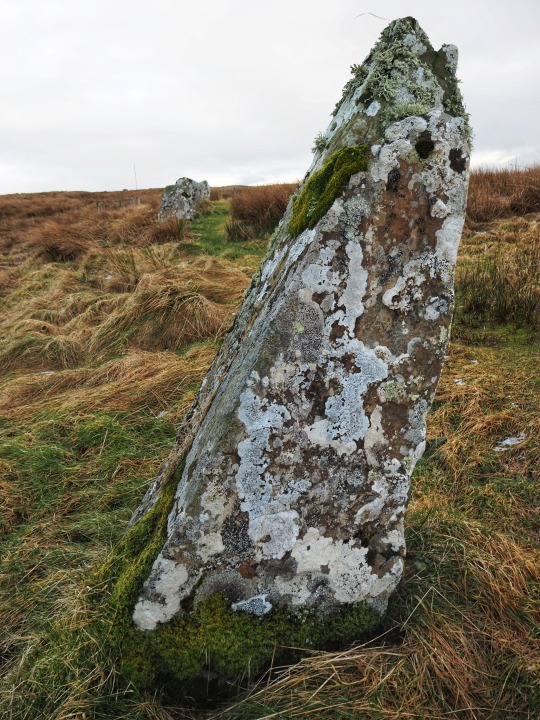




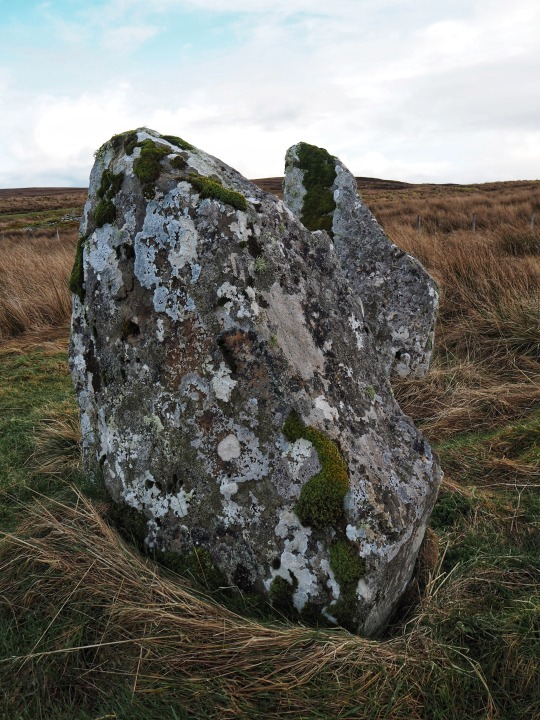
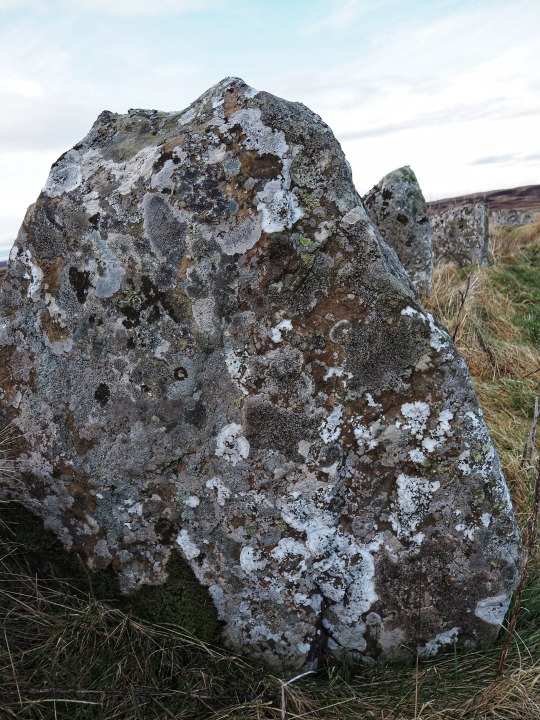
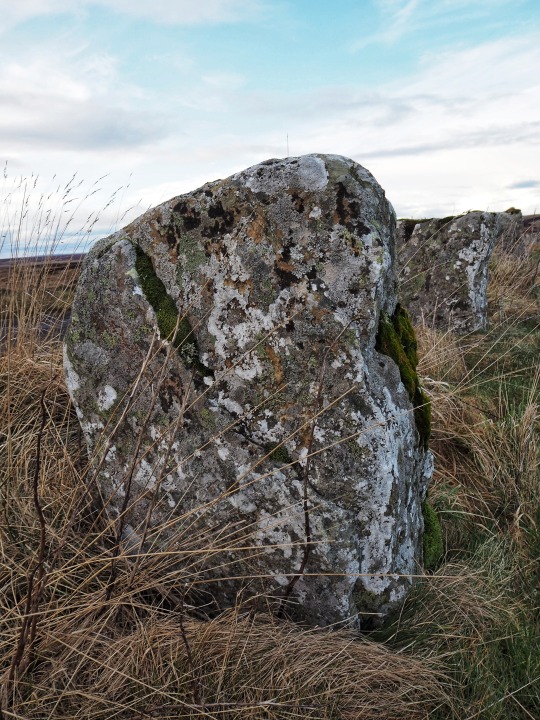
Achavanich Prehistoric Stone Setting, Caithness, Scotland, 25.2.20.
#ice age#stone age#bronze age#copper age#iron age#neolithic#mesolithic#calcholithic#paleolithic#prehistory#Prehistoric#megalithic#megalith#standing stone#standing stones#stone circle#creative#education#cross arts#cross curricular#community#identity#belonging#ritual#archaeology
86 notes
·
View notes
Text
Achavanich Prehistoric Cairn, Lybster, Caithness, The Highlands, 21.2.19.







#ice age#stone age#bronze age#copper age#iron age#neolithic#mesolithic#calcholithic#Paleolithic#prehistoric#prehistoric settlement#prehistory#cairn#burial chamber#burial mound#burial urns#Cist Cairn#Scotland#creative#education#cross arts#cross curricular#community#identity#belonging#ritual
89 notes
·
View notes
Text



Achavanich Prehistoric Stone Complex, nr Lybster, The Highlands, Scotland, 21.2.19.







#ice age#stone age#bronze age#copper age#iron age#Neolithic#mesolithic#calcholithic#Paleolithic#prehistoric#prehistory#standing stones#stone row#stone circle#monolith#megalithic#megalith#mehnir#cairn#rock art#creative#education#cross arts#cross curricular#community#identity#belonging#ritual
30 notes
·
View notes